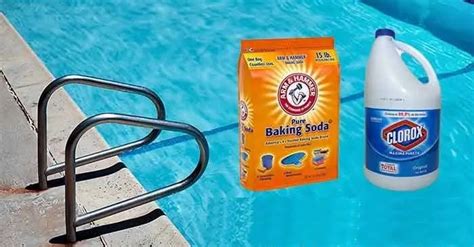Baking Soda Pool Cleaning: The Complete Tutorial
Maintaining a sparkling clean swimming pool can feel like a constant battle against algae, grime, and cloudy water. While chemical treatments are common, many pool owners are exploring more natural and eco-friendly alternatives. Baking soda, a readily available and inexpensive household item, offers a surprisingly effective way to boost your pool's cleanliness and balance its pH. This complete tutorial will guide you through the process of using baking soda for pool cleaning, addressing common concerns and ensuring you achieve optimal results.
What are the Benefits of Using Baking Soda in Your Pool?
Baking soda, also known as sodium bicarbonate, is a mild alkali. Its primary benefit in pool maintenance lies in its ability to raise the pH of your pool water. Low pH levels can cause corrosion of pool surfaces and equipment, and can irritate swimmers' skin and eyes. Adding baking soda gently elevates the pH, bringing it closer to the ideal range of 7.2 to 7.8. Beyond pH adjustment, baking soda can also contribute to:
- Improved water clarity: By helping to balance the alkalinity, baking soda can contribute to clearer, more sparkling water.
- Softer water: This can be particularly beneficial if you have hard water, leading to a more comfortable swimming experience.
- Reduced chemical usage: By maintaining a balanced pH, you might need to use fewer harsh chemicals like muriatic acid.
How to Use Baking Soda to Clean Your Pool: A Step-by-Step Guide
Before you begin, it's crucial to test your pool water. You'll need a reliable test kit to determine your current pH and total alkalinity levels. This is essential to avoid over-correction.
Step 1: Determine the Amount of Baking Soda Needed
The quantity of baking soda required depends on your pool's size and the current pH level. Most pool supply stores sell calculators or provide guidelines based on your pool's volume and the desired pH adjustment. It's crucial to follow these guidelines precisely to avoid imbalances. Adding too much baking soda can be just as harmful as adding too little.
Step 2: Dissolve the Baking Soda
Don't simply dump baking soda directly into your pool. This can cause uneven distribution and potentially damage your pool's surface. Instead, dissolve the calculated amount of baking soda in a bucket of pool water before adding it to the pool. This ensures even distribution and prevents clumping.
Step 3: Add the Baking Soda Solution to Your Pool
Slowly pour the dissolved baking soda solution into the pool, ideally near a return jet. This will help circulate the baking soda throughout the pool. Run your pool pump for at least 24 hours after adding the baking soda to allow for proper mixing and distribution.
Step 4: Retest Your Water
After 24 hours, retest your pool water to ensure the pH level has adjusted to the desired range. If necessary, you may need to make further adjustments, but always do so cautiously and in small increments.
How Often Should You Use Baking Soda in Your Pool?
The frequency of baking soda use depends on various factors, including your pool's size, the climate, and how frequently the pool is used. Regular testing is crucial. Some pool owners find they need to add baking soda once a month, while others may only need it every few months. Consistent testing is the best way to determine the optimal frequency for your pool.
Can Baking Soda Replace Other Pool Chemicals?
No, baking soda should not replace other essential pool chemicals. While it helps regulate pH and alkalinity, it doesn't address algae, bacteria, or other contaminants. You'll still need to use appropriate sanitizers (like chlorine or saltwater systems) and algaecides as part of your regular pool maintenance routine. Baking soda is a valuable tool, but it's just one part of a comprehensive pool care plan.
What if I Add Too Much Baking Soda?
Adding too much baking soda can raise your pool's pH to dangerously high levels. If this happens, you'll need to use a pH decreaser (typically muriatic acid) to lower the pH. Always exercise caution when using any pool chemicals and follow the instructions carefully. If you're unsure about how to proceed, consult a pool professional.
Is Baking Soda Safe for Swimmers?
Yes, baking soda is generally considered safe for swimmers. However, extremely high pH levels can cause skin and eye irritation. Maintaining the proper pH balance is crucial to ensure a comfortable swimming experience.
Where Can I Buy Baking Soda for My Pool?
Baking soda for pool use can usually be purchased at most pool supply stores. However, using the common baking soda you find in your grocery store is perfectly acceptable. Make sure you check the purity and avoid any baking soda containing additives.
This comprehensive guide helps you understand the benefits and proper application of baking soda in your pool cleaning routine. Remember, consistent water testing and a balanced approach are key to maintaining a clean, healthy, and enjoyable swimming environment. Always prioritize safety and consult a professional if you have any doubts or concerns.

